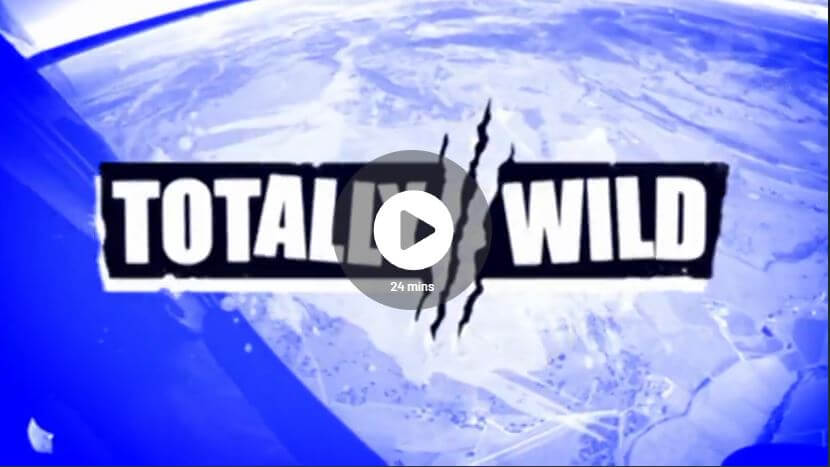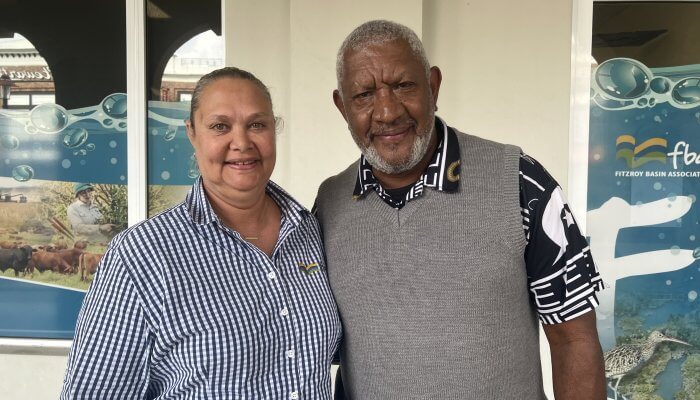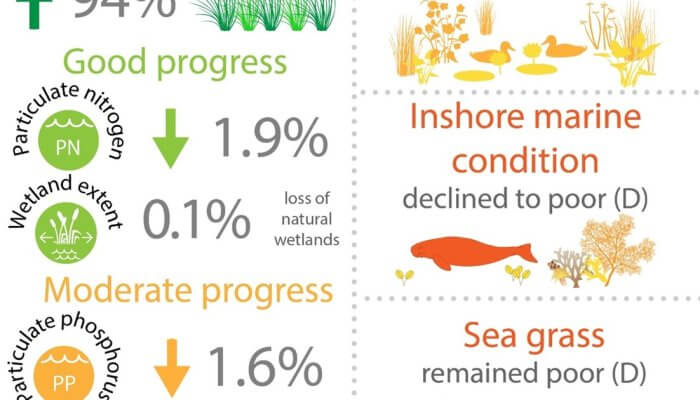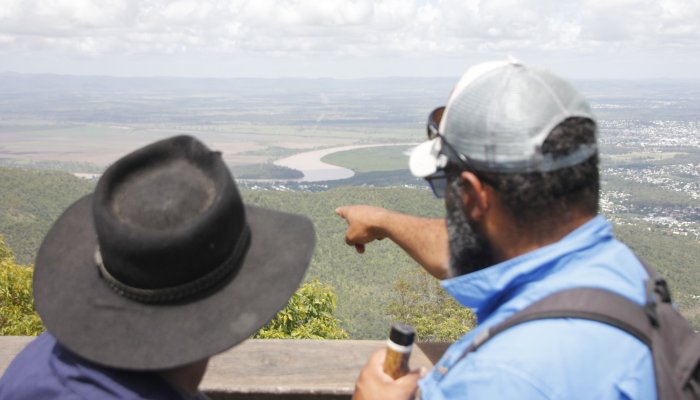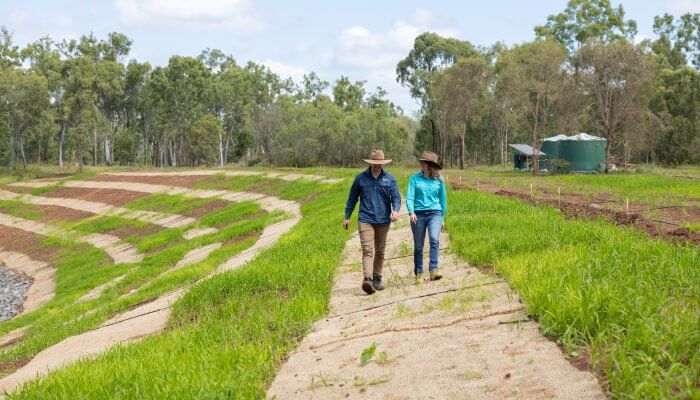Resources library - Caring for Catchments
Caring for Catchments Resources
2019 – 2020 Community Participation Highlights
National Landcare Program 2019-2020 Highlights
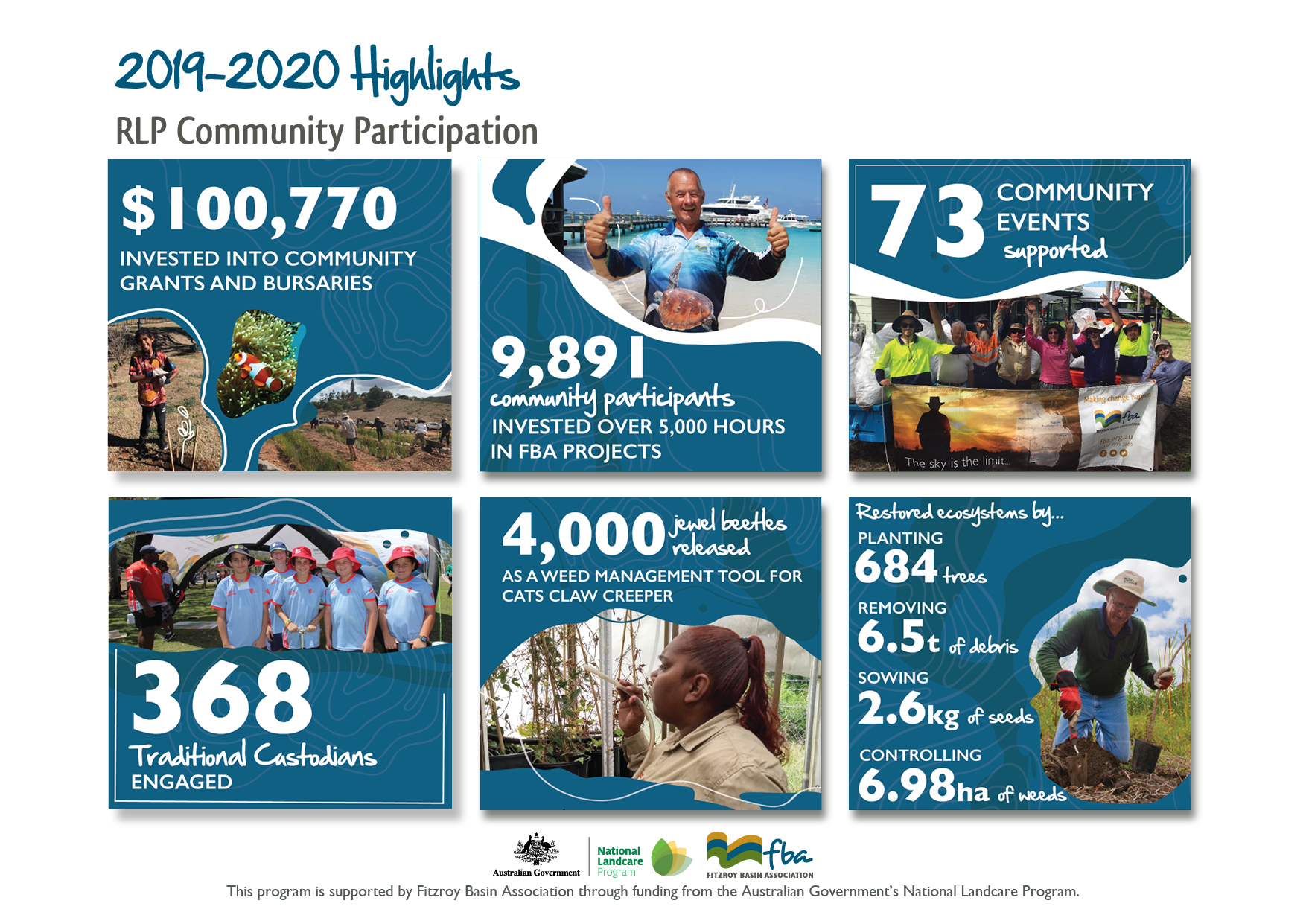
We are proud to share our major community wins achieved over the 2019-2020 financial year through the Australian Government's National Landcare program.
10/09/2020
Walking the Landscape Water Park Catchment Story
Water Park Catchment Story

To effectively manage the catchment it is important to have a collective understanding of how the catchment works. This map journal gathers information from experts and other data sources to provide that understanding.
11/08/2020
How to make Stick Rake Lines (Contour Barriers)
How to make Stick Rake Lines (Contour Barriers)
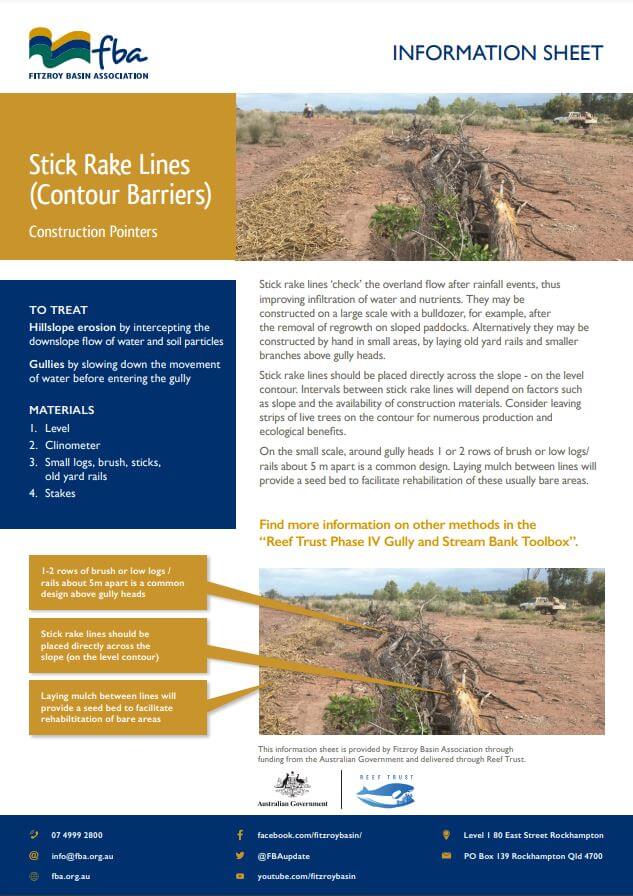
Treat hillslope erosion by intercepting the downslope flow of water and soil particles with Stick Rake Lines (aka Contour Barriers). Create your own Stick Rake Line with this handy construction pointer flyer.
11/07/2019
Porous check dams (leaky weir) educational resources
How to make Porous Check Dams
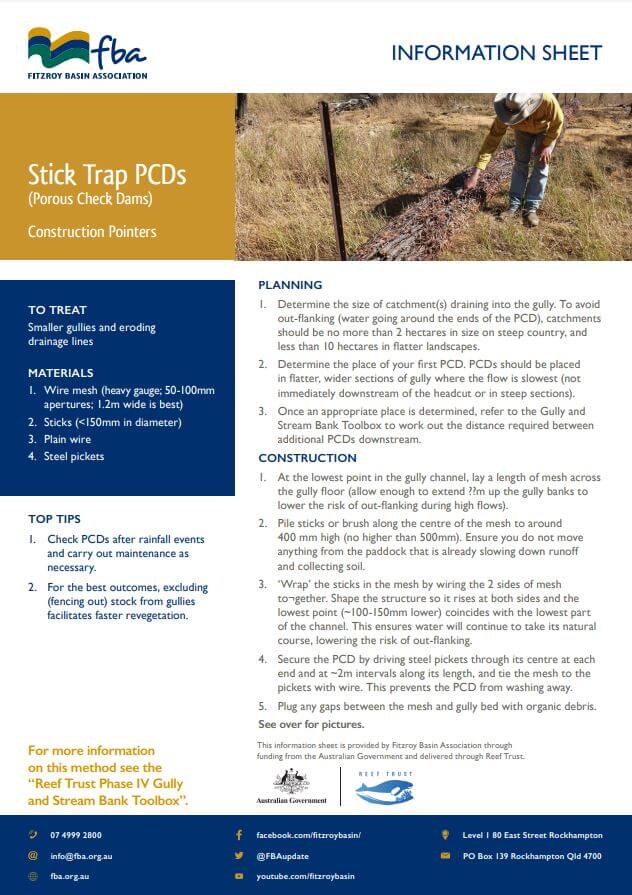
Arresting and reversing gully erosion requires resting the area and taking steps to rebuild and re-vegetate gullies. These resources explain simple and cost-efficient methods to help slow flow and start rebuilding gully floors through building Porous Check Dams (PCDs). PCDs are a low-cost and low-risk erosion control method recommended by CSIRO in their 'Gully Toolbox' kit.
11/07/2019
Educational FBA paddock to reef resources
From paddock to the reef - a catchment is all connected
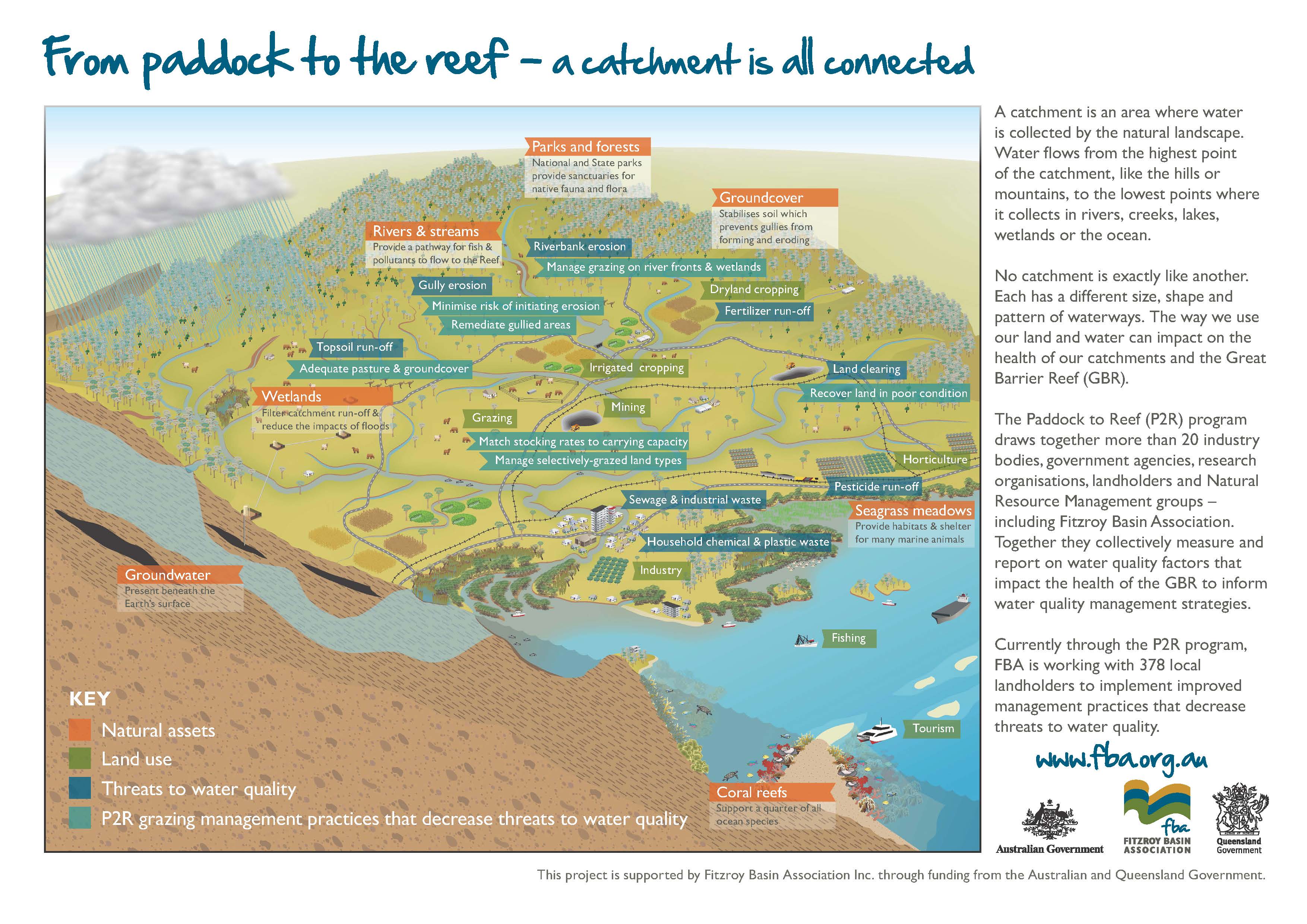
A catchment is an area where water is collected by the natural landscape. Water flows from the highest point of the catchment, like the hills or mountains, to the lowest points where it collects in rivers, creeks, lakes, wetlands or the ocean. No catchment is exactly like another. Each has a different size, shape and pattern of waterways. The way we use our land and water can impact the health of our catchments and the Great Barrier Reef (GBR).
03/07/2019
Improving fish passage in the Fitzroy Basin
Improving fish passage in the Fitzroy Basin

Many of our native fish species need to be able to migrate between fresh and salt water to complete their life cycle. Barriers such as roads, dams and weirs can prevent fish passage. Fitzroy Basin Association Inc. is working in priority areas across the Fitzroy Basin to improve fish passage by installing fish ways or fish ladders to allow access to upstream freshwater systems. In this video you can see two fishways we have installed, one at Moores Creek and the other at the Rockhampton Barrage. This work has been possible through funding from the Australian Government's Reef Program.
17/04/2017
Fish hotels
Yeppen Lagoon Fish Hotels

The Yeppen Lagoon had limited submerged large woody debris, which is necessary to provide both an important food source as well as habitat for the lagoon’s native freshwater fish. With the help of Rockhampton Regional Council, providing access to the site and through funding from the Australian Government’s Reef Programme, FBA installed 10 new fish hotels as habitat for juvenille fish. The hotels consist of interconnected and stacked hardwood log towers in one of the Fitzroy Floodplains largest and deepest lagoons, the Yeppen Lagoon. This project was supported by Fitzroy Basin Association, through the Australian Government's Reef Programme.
07/03/2017
Five Rocks Clean Up 2016
Five Rocks Clean Up 2016
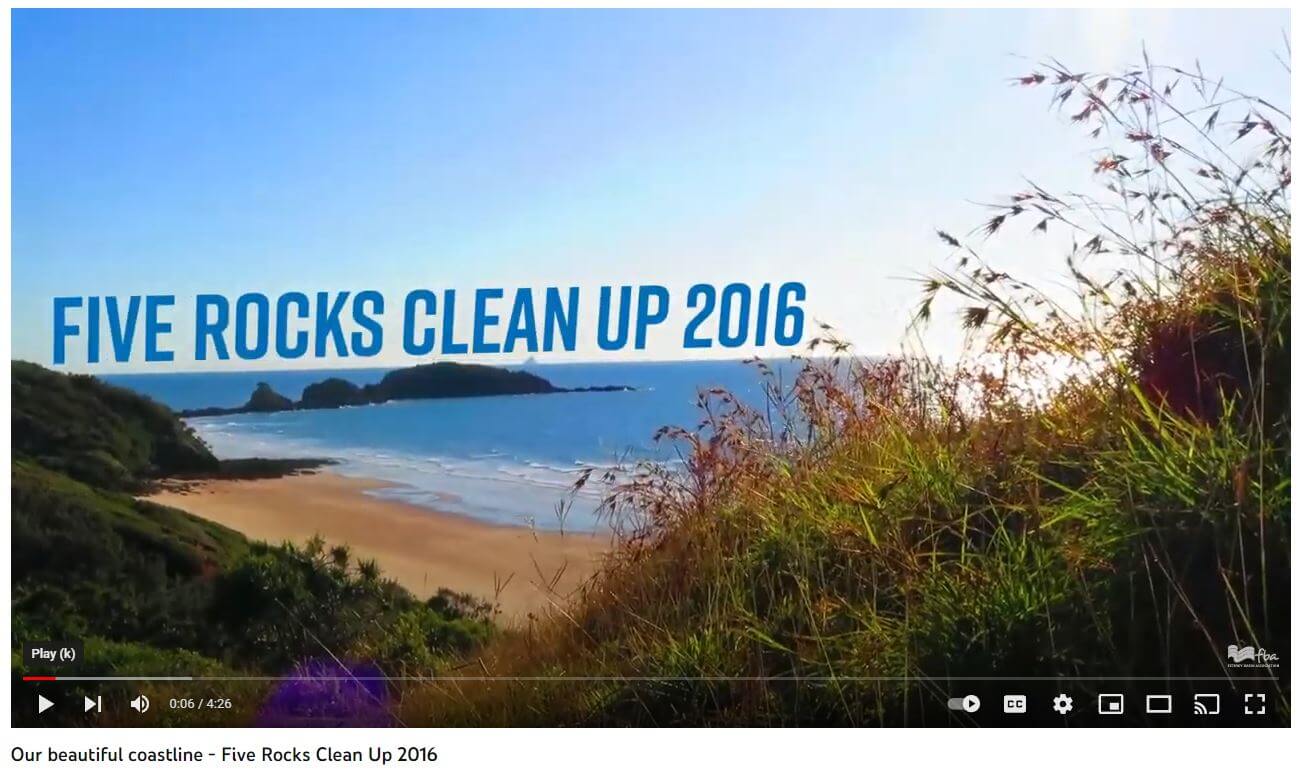
Five Rocks, located 60km north of Yeppoon is a special place and an internationally significant site loved by fishermen, campers and 4wd enthusiasts. A community event was coordinated by Surfrider Foundation (Capricorn and Sunshine Coast branches), Cleanwater Constructions and supported by Capricornia Catchments, QPWS and Fitzroy Basin Association Inc (FBA) through funding from the Australian Government's National Landcare Programme to raise awareness and encourage responsible use of the area's natural assets. 50 people camped overnight and walked the beaches to remove debris that had washed up along our shoreline. We can all make a difference to the state of our beautiful coastline. Small actions made by many, have a huge impact - so we encourage you to collect three items of litter next time you are on your beach walk. FBA would like to acknowledge and thank Kash Walker for creating this excellent and inspiring video.
07/12/2016





